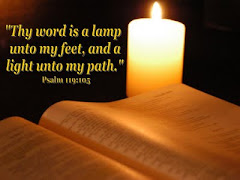
I just love this stuff. In another life, I could have been an archaeologist:
JERUSALEM (AP) - Israel displayed for the first time Wednesday a collection of rare coins charred and burned from the Roman destruction of the Jewish Temple nearly 2,000 years ago.
About 70 coins were found in an excavation at the foot of a key Jerusalem holy site. They give a rare glimpse into the period of the Jewish revolt that eventually led to the destruction of the Second Jewish Temple in A.D. 70, said Hava Katz, curator of the exhibition.The Jews rebelled against the Roman Empire and took over Jerusalem in A.D. 66. After laying siege to Jerusalem, the Romans breached the city walls and wiped out the rebellion, demolishing the Jewish Temple, the holiest site in Judaism.
The coins sit inside a glass case, some melted down to unrecognizable chunks of pockmarked and carbonized bronze from the flames that destroyed the Temple.
"These really show us the impact of the destruction of Jerusalem in the first century," said Gabriela Bijovsky, an antique coin expert from Israel Antiquities Authority. "These are a very vivid, dramatic example of that destruction."
"The most important coins we have are from those last four or five years of the rebellion against the Roman army, and one coin we found was actually minted very close to the destruction of the Second Temple," she said.
The coins were excavated from an ancient street below the Temple Mount, experts said. Archaeologists had to sift through debris and remove boulders thrown off the Temple Mount during the Roman raid before they found the road and the hoard of coins.
Today the Al Aqsa Mosque compound sits atop the ruins of the temples. Muslims refer to the site as the Noble Sanctuary, marking the spot from where they believe the Prophet Muhammad ascended to heaven. The conflicting claims make the site one the most explosive issues in the Israel-Palestinian conflict.
The coins are part of a larger exhibition in Jerusalem's Archaeological Garden, showing a collection of antique coins that have been uncovered over the past three decades.
The exhibition shows not only coins minted in Jerusalem during the rebellion but also European, North African and Persian coins that were found around the holy site from various periods.
"This just shows the international character of the city," Katz said. "It shows the importance of Jerusalem to generations of people ... the importance of Jerusalem never faded away for Jews, Christians and Muslims," she said.
The destruction of the Temple they are speaking of, of course, is the same incident Jesus was speaking about in the Gospel reading from last Sunday's Mass (see previous blog entry
here.]. Funny how the accuracy Scriptures are continually verified by the witness of history.
 To help you prepare for this coming Sunday, here are the readings for this coming Sunday's Scripture readings from the U.S. Catholic bishops website. This Sunday is the 1st Sunday in Advent, and features a portion of Jesus' Olivet Discourse from the Gospel according to St. Luke. It also marks the beginining of a new liturgical year; in the three year cycle of readings which the Catholic Church uses, we are going from Cycle B to Cycle C.
To help you prepare for this coming Sunday, here are the readings for this coming Sunday's Scripture readings from the U.S. Catholic bishops website. This Sunday is the 1st Sunday in Advent, and features a portion of Jesus' Olivet Discourse from the Gospel according to St. Luke. It also marks the beginining of a new liturgical year; in the three year cycle of readings which the Catholic Church uses, we are going from Cycle B to Cycle C.







 Here are the readings for this coming Sunday's Scripture readings from the
Here are the readings for this coming Sunday's Scripture readings from the 

